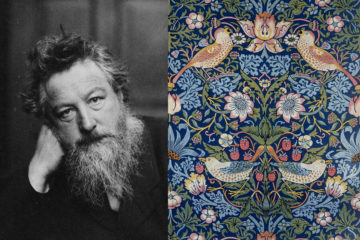April Austin in The Christian Science Monitor:
 Behind the exquisite floral wallpaper lurks a social reformer. British designer William Morris (1834-96) is today best known for his lush, garden-inspired patterns for wall coverings, but his lifework encompassed far more than mere decoration. He sought nothing less than to overturn what he considered the deleterious effects of industrialization on Victorian society. And his artistic influence continues today, not only at London’s Victoria and Albert Museum, an institution he helped shape, but also as inspiration to contemporary artists.
Behind the exquisite floral wallpaper lurks a social reformer. British designer William Morris (1834-96) is today best known for his lush, garden-inspired patterns for wall coverings, but his lifework encompassed far more than mere decoration. He sought nothing less than to overturn what he considered the deleterious effects of industrialization on Victorian society. And his artistic influence continues today, not only at London’s Victoria and Albert Museum, an institution he helped shape, but also as inspiration to contemporary artists.
A gorgeously illustrated book, titled simply “William Morris,” edited by Anna Mason and released by the Victoria and Albert Museum, offers a detailed portrait of the man, his work, and the values that fueled both. Even the dust jacket is embellished with one of Morris’ elegant designs from the museum’s extensive archives of decorative art. The book, with essays by more than a dozen experts, lays out the varied aspects of Morris’ life as an artist, designer, poet, educator, entrepreneur, preservationist, and political activist. Each role fed the others, and nourished his restless and fertile mind.
Morris was considered an outlier by his contemporaries, who were busy either extolling Britain’s growing industrial might or profiting directly from it. Morris was dismayed by the increased mechanization that he felt robbed workers of their dignity and the potential for creativity in their work. He also believed that mass-produced goods were inherently inferior, that their manufacture led to waste and environmental degradation, and that their shoddiness reflected poorly on the household for which they were purchased. His best-known dictum was “have nothing in your houses that you do not know to be useful, or believe to be beautiful.”
More here.
